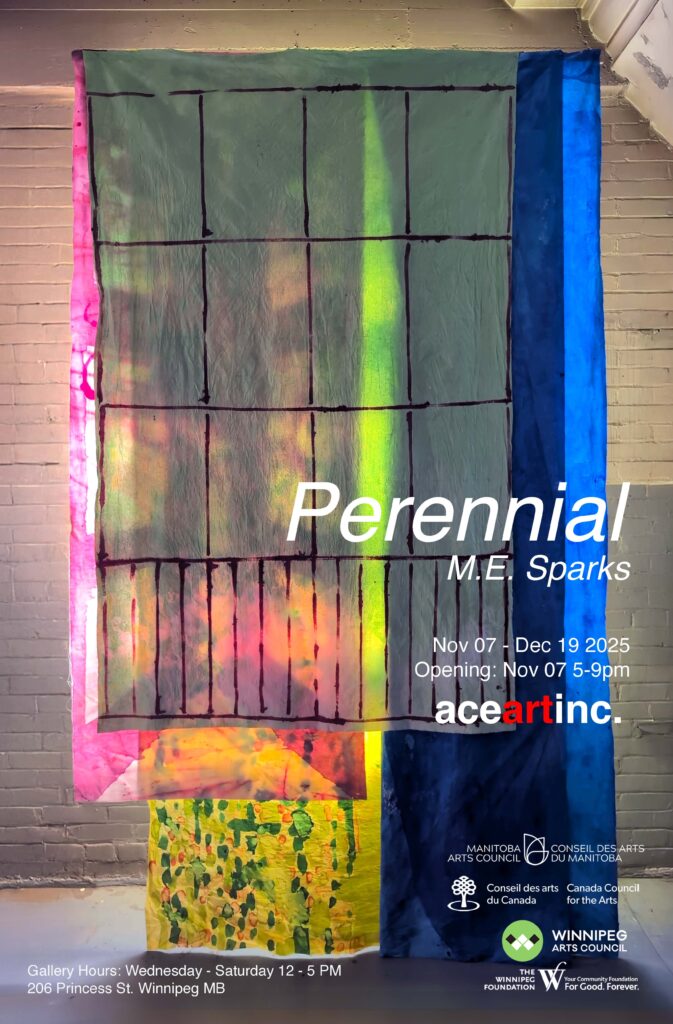Perennial
Exhibition by M.E Sparks
OPENING DATE : NOVEMBER 7 2025 5-9PM
EXHIBITION RUN: NOVEMBER 7 – DECEMBER 19

M.E. Sparks (she/her) is an artist and educator based in Winnipeg, Treaty 1 Territory. She holds an MFA from Emily Carr University and BFA from NSCAD University. Sparks is the recipient of research project grants from the Canada Council for the Arts, Manitoba Arts Council, Winnipeg Arts Council, and BC Arts Council. She has participated in residencies in Canada, United States, Germany, and Finland—most recently at the Vermont Studio Center and NARS Foundation International Residency in Brooklyn. Her work has been exhibited at Gordon Smith Gallery of Canadian Art (North Vancouver), Alternator Centre for Contemporary Art (Kelowna), Trapp Projects (Vancouver), Access Gallery (Vancouver), The Painting Center (NYC), 226 Main St. Gallery (Winnipeg), among others. Sparks’ solo exhibition “Perennial” at AceArtInc. is made possible by generous funding support from Canada Council for the Arts and Manitoba Arts Council.
M.E. Sparks uses methods of painting, collage and video to examine the relationships between surface and image, materiality and content, legibility and disorientation. In her paintings, Sparks pulls apart and recombines art historical imagery, searching for the moment a form dislocates from its origins to resist classification.
In recent work, this method of abstraction occurs through the cutting, draping, and layering of painted canvases and recycled fabrics. Modular and unfixed, the draped paintings resist a finished state while implying the possibility of future reorganization. Rather than present a linear narrative, this mode of reassembly aims to temper expectations of legibility and interrupt an immediate reading of the image. Through this work, Sparks explores the material possibilities of paint and fabric to call into question painting’s own limiting dichotomies (front vs. back, abstraction vs. figuration, image vs. object) while introducing a softness and provisionality to the painted form. By reconsidering the conventions of painting, Sparks searches for uncertain and unsettled spaces of representation, as well as the reconciliation and transformation of historical narrative.
About aceartinc.: We are an artist-run centre dedicated to the support, exhibition, and dissemination of contemporary art. aceartinc. Presents five major exhibitions a year by contemporary visual artists. www.aceart.org
We are on Treaty 1 Territory. On the original lands of Anishinaabeg, Cree, Oji-Cree, Dakota, and Dene Peoples, and the National Homeland of the Red River Métis. We offer our respect and gratitude to the caretakers of this land.

